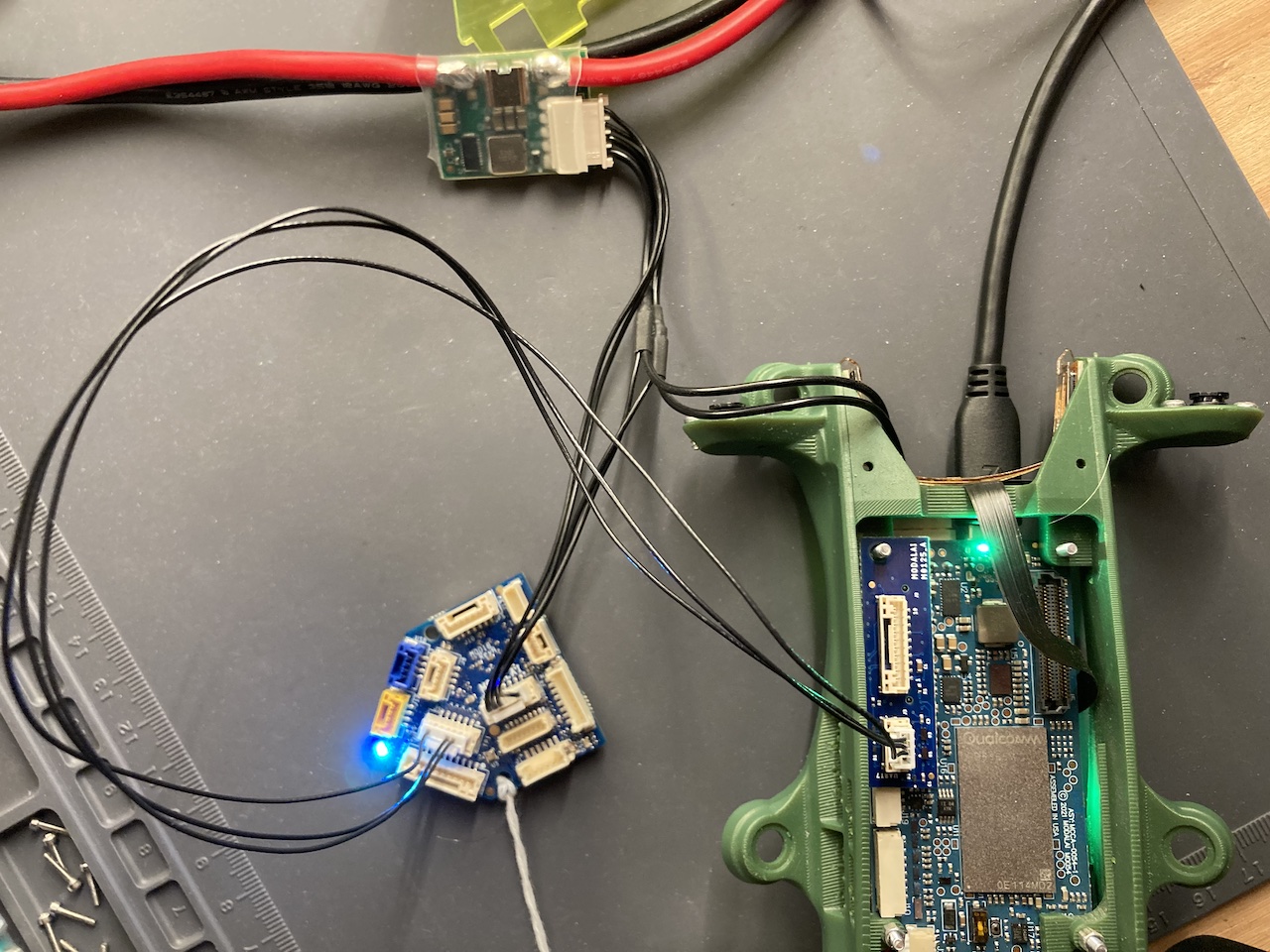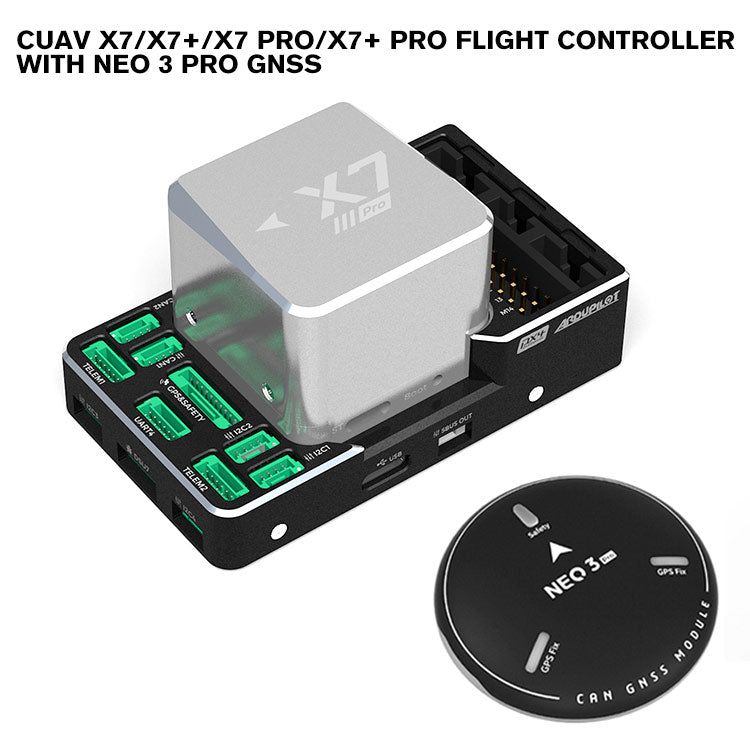SparkNavi Drone Flight Controller and GNSS/INS Made in Taiwan: Precision Navigation for Drones
SparkNavi Drone Flight Controller and GNSS/INS Made in Taiwan: Precision Navigation for Drones
Blog Article
Checking Out the Duty of Drone Flight Controllers in Enhancing Flight Stability and Navigation Efficiency
The advancement of drone modern technology has actually dramatically boosted the significance of trip controllers, which serve as the brain of these airborne cars. By integrating real-time information from a variety of sensing units, trip controllers improve trip security and navigation effectiveness, guaranteeing that drones can run smoothly also in complicated atmospheres.

Recognizing Flight Controllers
Trip controllers are important elements in the performance of drones, functioning as the minds that take care of and maintain trip operations. These sophisticated gadgets process data from various sensing units, including accelerometers, gyroscopes, and GPS, to ensure that the drone keeps its designated flight course. The trip controller analyzes this data and executes commands based upon pre-defined formulas, allowing the drone to react to environmental adjustments, such as wind or obstacles.
The key function of a trip controller is to preserve security during trip. It accomplishes this by making real-time changes to the drone's electric motors and control surfaces, guaranteeing equilibrium and control. Additionally, contemporary trip controllers integrate innovative features such as waypoint navigating, allowing for automated flight courses and enhanced operational performance.
Comprehending the architecture of trip controllers is essential for both enthusiasts and professionals. As modern technology developments, flight controllers have ended up being much more portable and qualified, integrating artificial intelligence to adapt and boost decision-making procedures to intricate flight circumstances.
Trick Components of Trip Security
Achieving ideal flight security in drones counts on a number of vital parts that function in concert to ensure controlled and smooth operations. Central to this security is the trip controller itself, which processes information from different sensors to preserve the desired trip attitude. This consists of accelerometers and gyroscopes that determine activity and orientation, permitting real-time adjustments to the drone's position.
One more important part is the digital speed controllers (ESCs), which manage the power supplied to the electric motors. By finely tuning motor rates in reaction to flight controller commands, ESCs aid keep balance and counteract disruptions created by wind or sudden movements.
Furthermore, the layout of the drone's structure plays a crucial role in flight stability. A well-structured frame minimizes resonances and boosts the general wind resistant profile, contributing to smoother flight attributes. The combination of advanced algorithms within the trip controller aids in anticipating modifications, ensuring a receptive and versatile flight experience.
With each other, these parts form a cohesive system that improves a drone's stability, permitting precise handling and improved efficiency in various trip problems.
Navigating Effectiveness Strategies
Effectiveness in navigating is vital for maximizing drone operations, specifically in complicated atmospheres. Effective navigating methods boost the capability of drones to traverse challenging terrains and stay clear of obstacles, thus boosting functional efficiency and safety and security.
One prominent strategy is the implementation of sophisticated general practitioners and inertial dimension units (IMUs) that give exact area tracking and orientation data. These innovations enable drones to calculate optimal flight courses in real-time, taking into consideration different aspects such as wind conditions and prospective obstacles.
One more method includes the usage of algorithms for course preparation and optimization. Formulas such as A * and Dijkstra's algorithm can be deployed to determine the most efficient path while minimizing energy usage and trip time. Additionally, incorporating artificial intelligence models can enable drones to adaptively gain from their atmospheres, boosting navigation abilities with experience.

Influence on Autonomous Drones
The assimilation of innovative navigating techniques has profoundly changed the abilities of autonomous drones, allowing them to run with higher autonomy and precision. SparkNavi drone flight controller and GNSS/INS made in taiwan. These improvements are largely credited to advanced flight controllers that utilize real-time information handling and sensing unit blend, allowing drones to navigate intricate atmospheres perfectly
The influence on autonomous drones extends beyond simple learn the facts here now navigating; it encompasses boosted challenge avoidance, enhanced stability throughout vibrant problems, and enhanced objective reliability. By leveraging algorithms that include maker discovering and expert system, drones can adapt to transforming conditions, making informed choices that enhance their flight courses while decreasing dangers.
In addition, the application of robust trip controllers has actually assisted in the execution of complex jobs, such as aerial evaluations, distribution services, and farming tracking, with minimal human treatment. This capacity not only streamlines procedures however also minimizes human error, consequently enhancing general safety.
Consequently, the operational range of autonomous drones has actually broadened considerably, making them vital tools in different markets. Their capacity to carry find out this here out successfully in diverse situations emphasizes the essential role that advanced flight controllers play fit the future of unmanned airborne systems.
Future Trends in Flight Control
Regularly, advancements in flight control modern technology are poised to redefine the landscape of drone operations in the coming years. Arising trends indicate a considerable change in the direction of enhanced artificial intelligence (AI) combination, allowing trip controllers to refine real-time data much more effectively. This advancement will help with enhanced decision-making abilities, permitting drones to adjust to dynamic environmental problems autonomously.
In addition, the implementation of device learning formulas is anticipated to enhance predictive maintenance, thus lessening downtime and prolonging the lifecycle of drone elements. This positive strategy to upkeep will certainly be that site important as drone applications increase throughout different markets, from agriculture to logistics.

.png)
Finally, improvements in safe and secure communication procedures will attend to safety and security and governing problems, making certain that drones can run effortlessly in overloaded airspaces (SparkNavi drone flight controller and GNSS/INS made in taiwan). Collectively, these patterns aim towards a future where trip control systems are not only smarter and more also capable yet efficient of running securely in an increasingly integrated airspace
Verdict
To conclude, drone flight controllers are important to enhancing flight security and navigation effectiveness through the sophisticated processing of sensor data. By keeping optimal flight mindsets and using sophisticated formulas for course optimization and barrier evasion, these controllers substantially add to the freedom and functional security of drones. As innovation proceeds to develop, additionally innovations in trip control systems are anticipated, assuring better efficiency and increased capacities in the world of unmanned airborne cars.
By integrating real-time information from an array of sensing units, trip controllers boost trip security and navigating performance, making certain that drones can operate smoothly even in complex environments.Trip controllers are indispensable parts in the performance of drones, offering as the brains that stabilize and take care of trip procedures. Additionally, modern-day trip controllers incorporate advanced features such as waypoint navigation, allowing for automated trip courses and enhanced functional performance.
Central to this security is the trip controller itself, which processes data from various sensing units to preserve the desired flight attitude.In verdict, drone flight controllers are indispensable to boosting trip stability and navigating performance via the sophisticated handling of sensor data.
Report this page